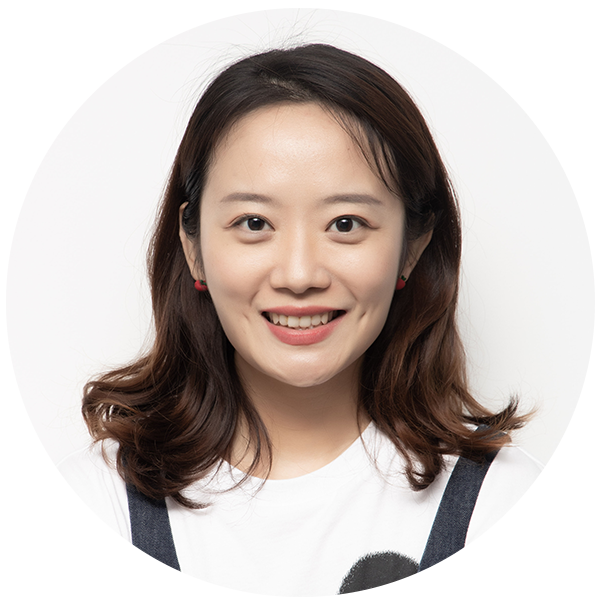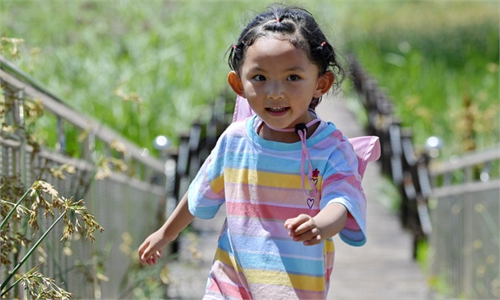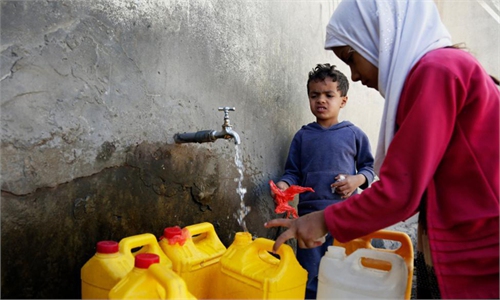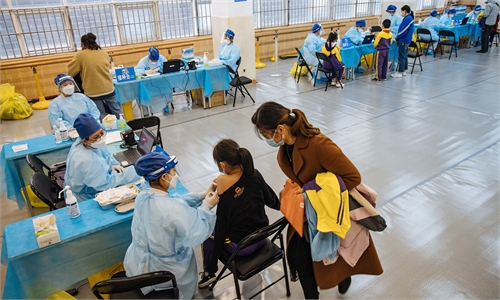IN-DEPTH / IN-DEPTH
China’s heavy investment in education lays foundation for national development
Leaving none behind
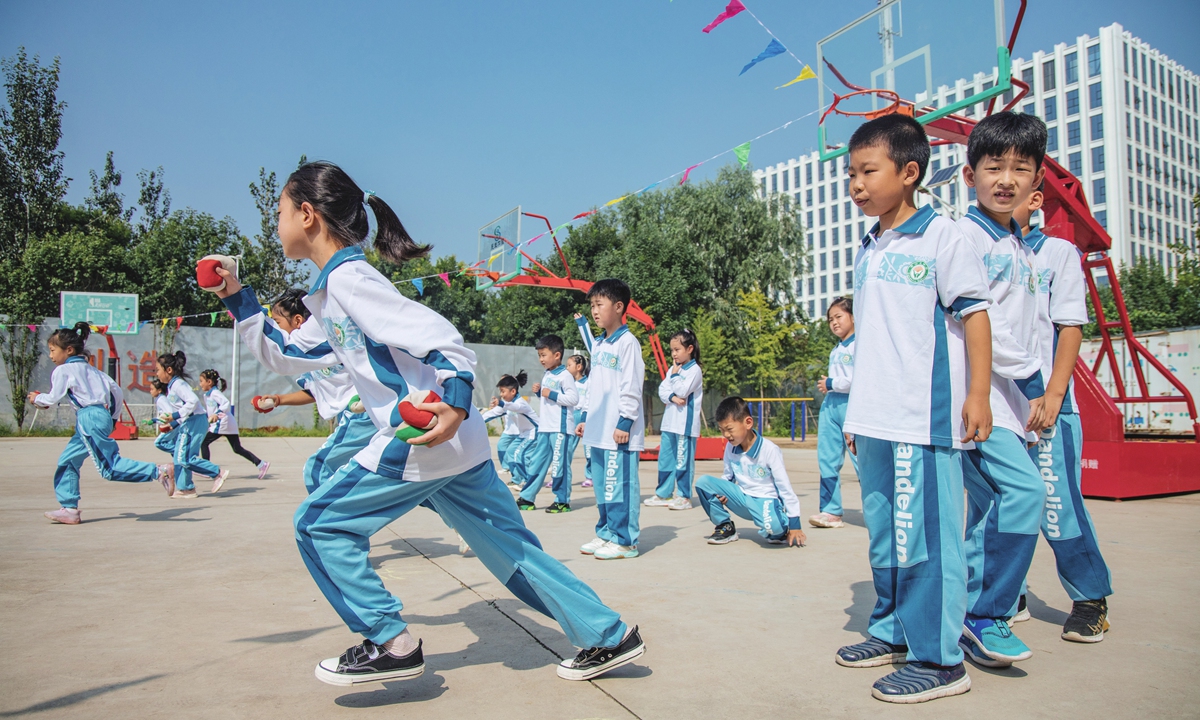
Students in Dandelion Middle School play on the playground. Photo: Li Hao/Global Times
Editor's Note:
How have China's developments been reflected in its education sector over the past 70 years? There is a large volume of data to consider- from the 1,799 kindergartens across China in 1950 to 267,000 in 2018; from a 20 percent enrollment rate in elementary school in 1949 to 99.95 percent rate in 2018, and from a 0.26 percent rate of higher-education enrollment at the beginning of the founding of the People's Republic of China to 48.1 percent in 2018.
Over the past decades, upholding the idea of education has laid the foundation for the nation's development. China has heavily invested in the improvement of education sector and along with the expansion to access to education for the general public. The country has also paid special attention to people in remote areas or families that suffer from financial issues to ensure their access to educational facilities. From starting the Hope Projects for children in villages, to offering financial support to special schools, offering tuition waivers, and awarding scholarship or financial aid to those in need, China is working hard to leave no child behind on its way to a fortified education system.
The following stories on three schools only further shed a light on the country's efforts in this field.
Help in need
Wang Jinping, a single mother, can't help but shed tears as she starts to talk about the school her daughter attends. "We're a special family… but I never felt we were looked down on when I enter the Dandelion School campus. All I feel is positive energy."
Since Wang sent her daughter, Nianci, to the Dandelion Middle School in Beijing in 2018 after she left her hometown in Northeast China's Heilongjiang Province, she felt relieved that eventually her child is now able to receive a good education in a place filled with love.
Set up in 2005, Dandelion Middle School is Beijing's first fully legal, charitable, non-profit middle school set up for children from low-income migrant families, providing them with equal access to quality education.
Affected by the COVID-19 epidemic, Wang's funds were too limited to pay for her daughter's tuition after the first semester, but later the school decided to assist her with the raising of necessary funds.
Studying at the Dandelion enriches Nianci's life as she now has a chance to visit museums and exhibitions, and participate in all sorts of activities with her peers, an experience with which her mom alone would be unable to provide her.
The Dandelion Middle School has helped thousands of kids like Nianci. It is also one of thousands of schools that China has set up to help students from underdeveloped areas or low-income families. A look on how the Dandelion Middle School works also sheds a light on how the Chinese government is working to ensure children's rights to education are guaranteed.
To ensure kids from migrant families in need truly have access to education, the Dandelion Middle School is used to preferentially admit kids from families with difficulties, those from low-income families, and those whose family members are sick or elderly, Zheng Hong, the founder of the Dandelion Middle School, told the Global Times.
When speaking of how the non-profit school manages to stay afloat and offer quality education to disadvantaged children, Zheng said, "Love is always there. We are always able to seek resources that help us get through difficulties."
About 70-75 percent of their funding relies upon charities and private donors. The rest are from government support and tuition fees. Financial grants for each kid from the government have increased to 1,000 yuan from a previous 100 yuan over the years. With support of the government and numerous of donors, Dandelion Middle School was able to move to a new modern campus from its previous shabby one where some classrooms had leaky roofs.
"It's not only financial support from the Chinese government that has been increasing year on year, but facility support offered to the school are comprehensive," Zheng said.
Study opportunities at the Dandelion school could hardly meet with demand, though the population of migrant workers in Beijing has largely shrunk in recent years, a large number of children from migrant families still do not have access to proper education, according to Zheng. "I have seen the number of students rising from the first year at 60 students, to 120, then 180, to 500, and now there are some 700 students in total," she said.
Frequent home visits from the school are able to reach out to all students who have difficulty in accessing education, Ren Xiaofang, a student who is in her final year of middle school told the Global Times.
Ren comes from a family with three kids. Her mother is currently unemployed and her father makes a living on being a loader. After home visits to Ren's home, the Dandelion school exempted Ren's meal fees.
"The Dandelion school is the place that taught her love and gratitude. Teachers here are very caring; they not only teach us the recommended syllabus but also how to deal with problems and face up to life… We're able to participate in all kinds of activities as schools continue to receive love and support from donors," Ren said.
Ren said she has many dreams such as becoming a diplomat, a translator, or a teacher. If she gets a chance to be a teacher, she would choose to return to the Dandelion school to repay the love and support she has received at the school to the future kids.
Special love
According to a report released in 2019, there are more than 10 million people within the autism spectrum, including more than 2 million children under the age of 12. About one in 143 children in China is autistic, higher than the one in 160 children worldwide estimated by the WHO, according to a 2019 report.
In 1987, China launched the first national disability survey, but autism was not included. In 2006, autism was officially listed as a mental disability.
On November 20, 2007, more than 20 years after the first diagnosis of autism in China, China Disabled Persons' Federation founded the first official health facility for autistic children in Beijing.
The Global Times recently visited Beijing Stars and Rain Education Institute for Autism, a local education rehabilitation institute that was founded in 1993 by a mother of an autistic child and provides special training and education for autistic children and teenagers. It also supports parents of autistic children in educating their kids.
Most of the furniture, air conditioners, or pool tables are donated: Little labels with different donors' names are pasted on them. In an autistic adults' classroom for autistic adults, three of them carry on their stimulated work - covering small photos with plastic packages is step one, cutting off a plastic paper is step two, attaching the paper onto the small photo is step three and finally, putting the photo into a box.
In the autistic minors' classrooms, parents take class alongside with children.
"It's impossible to cure autism, but patients can progress with timely treatment: The earlier the better," said a teacher. "The first signs of autism usually appear younger than the age of 3, which is the best time for treatment."
As China advocates the notion that "no one is left behind in building a moderately prosperous society in all respects," the institute offers educational skills and techniques to parents of autistic children. Parents across the nation come here to seek help for their autistic children so that they can be integrated into society.
Sun Zhongkai, a Beijing Star and Rain's director of the development department, told the Global Times that national support for autistic people and the autism support industry is growing.
During the 13th Five-Year Plan (2016-20), the Chinese government made great adjustments to make it easier for families with autistic children to apply for rehabilitation subsidies, said Sun. Families only need to provide a diagnosis or media record of the autism while not necessarily needing to provide a deformity certificate any more.
Subsidies for special education range from several thousand to 12,000 yuan per capita per year in Beijing currently.
Beijing is now subsidizing 36,000 yuan a year in rehabilitation costs for special families. Families can apply for both special education subsidies which range from several thousands to about 12,000 yuan per capita per year and a rehabilitation subsidy of 36,000 yuan per capita a year, according to Sun.
Some provinces used to have limited quotas for these subsidies, but now such limitations are gone.
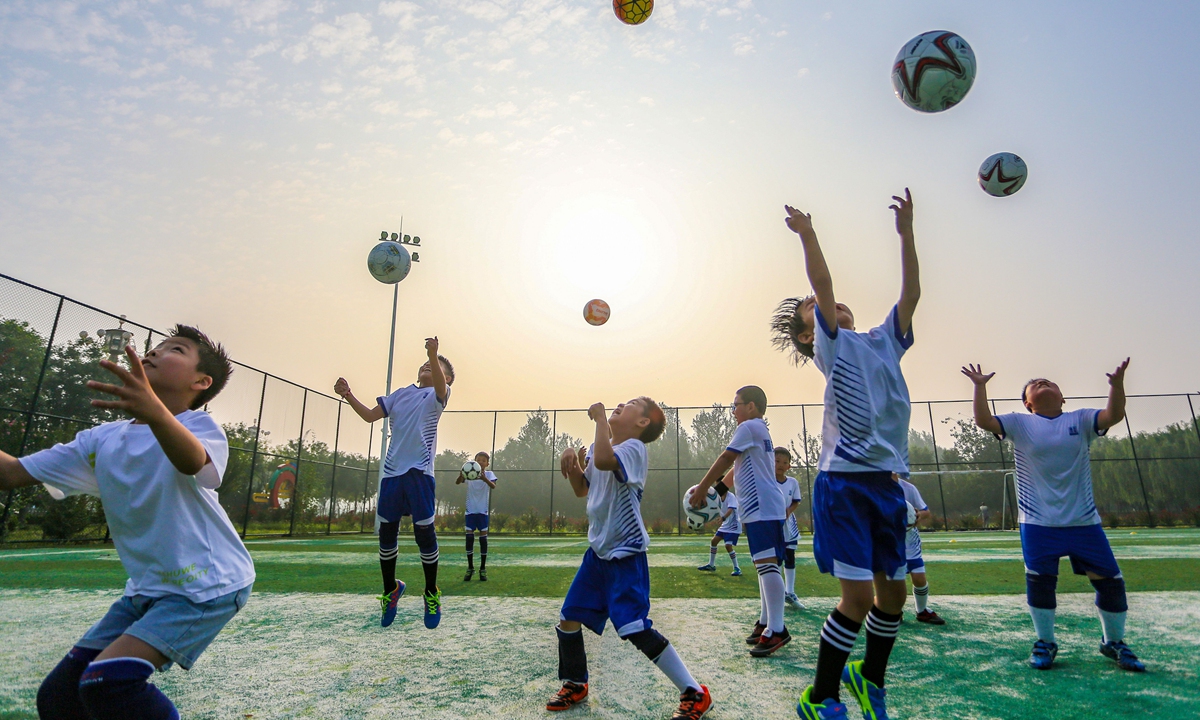
Children receive soccer training at a club in Handan, Hebei Province, on July 31. Photo:VCG
The rent of the organization's campus is also cheap with no subsequent increases in rent in recent years. Electric consumption is also subsidized thanks to the support from local authorities, Sun said.In the past, the organization could only provide services for about 200 families a year but now it has a service capacity of 600-800 families a year.
Sun said their goal is not to eliminate this special group, but to treat this group with equal visibility, so that everyone can explore the full potential of their respective abilities, as well as providing certain advantages to support them, and affording them respect, understand as well as unconditional acceptance.
Keep moving
Putting "village education" into a search engine, so many news articles pop up to show readers stories on how schools in villages evolved from a damaged room into brand new buildings with playgrounds; or how children who used to drop out from school for having no money, finally sat in clean classroom to read books without worrying about tuition.... the story of Douhong Primary School in Huize county in Southwest China's Yunnan Province is one such story.
For the past 70 years, the primary school has developed with the nation and witnessed all the changes in China's education sector.
Dai Purun, who was born in the village, completed elementary education at the village school and then went back to work in the school after finishing high education, recalled to media on the history of the school.
In 1912, the Dai family of the village invited teachers to lecture children in an ancestral hall. Dai went to receive education there when he was a 7-year-old in 1954. "At that time, the new China had just been founded and there was no money to fund village education. This was why the Dai family ran the school."
From 1960 to 1966, the school had more students but few teachers and a harsh learning environment- students sitting on stones for chairs and the use of coarse paper. In 1982, with the 6,000 yuan offered by the county government and 9,000 yuan raised from villagers, the project to rebuild the school started.
There have been no difficulties in the school's development after 2000. The nation carried out one preferential policy after another to help village schools to develop. Douhong Primary School and its students also benefited from these policies - in 2005, after canceling agricultural tax, the local government allocated 100,000 yuan to the school for rebuilding and expansion; in January 2006, China decided to promote educational appropriations to 218.2 billion yuan in five years and scrapped the tuitions of village students for compulsory education; in 2011, with the nutrition projects starting across nation, students can have free meals with beef, pork, milk, and eggs.

Kindergarteners pick fruits and vegetables during an educational activity themed around saving grain in Huzhou, East China' s Zhejiang Province, on October 14. Photo: IC
In 2013, the school built a two-story canteen measuring 271 square meters. "Children can have clean, nutritious meals. The parents felt relieved," said Dai, noting that in 2017, the school had another building with rooms for computer, science, reading and fine arts classes.Children in the village and the county received better education with the developments of the school. Since 2010, a total of 128 students went to Tsinghua University and Peking University - two of the top universities in China from the deep, poor county in Yunnan.
"For the past 70 years, the spirit of striving has been interwoven in the school's development," Dai Longfei, the current principal of the school, was cited by the Education Newspaper as saying, noting that without local villagers' efforts or the country's firm support, the school could not have become what it is today. It is also the epitome of the development history of China's education.


